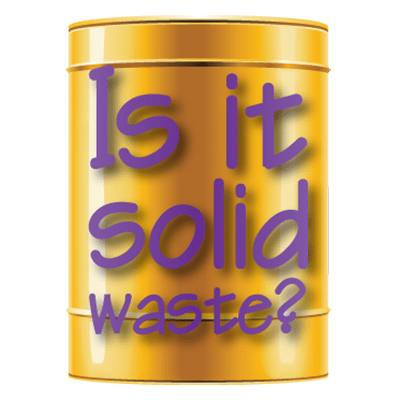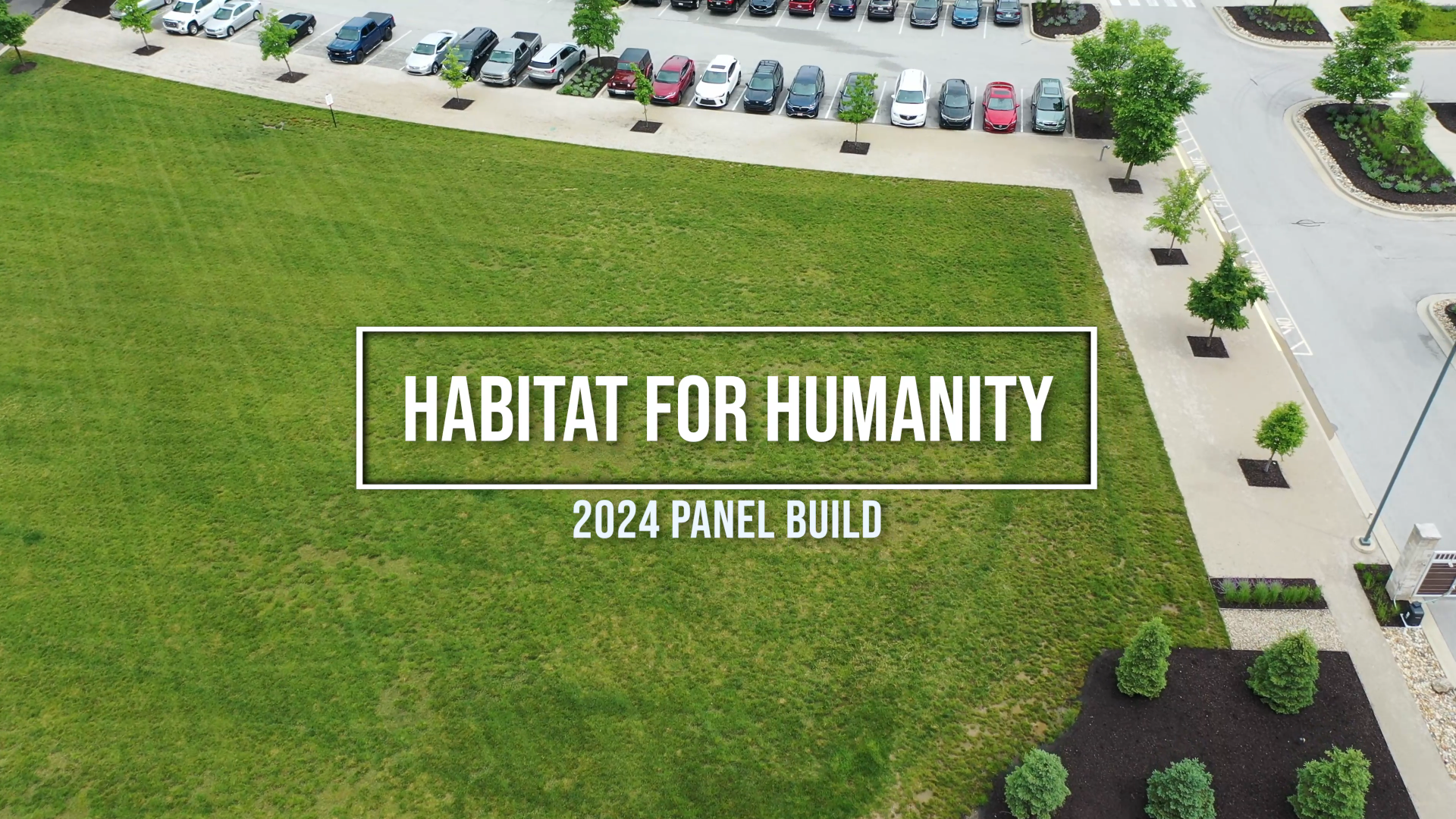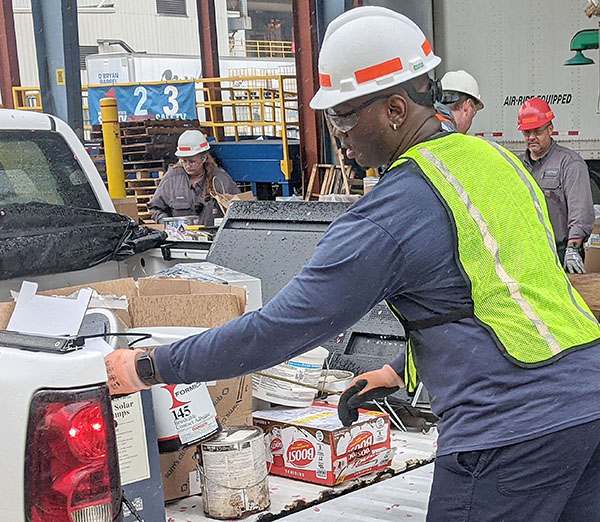
40 CFR defines solid waste as “any discarded material that is not excluded under §261.4(a) or that is not excluded by a variance granted under §260.30 and §260.31 or that is not excluded by a non- waste determination under §260.30 and §260.34.” Additionally, discarded material is, “any material which is: (A) Abandoned… (B) Recycled…(C) Considered inherently waste-like, …or (D) A military munition identified as a solid waste in §266.202.” This makes everything perfectly clear, right? Relative fuzziness aside, what I want to talk about today is the 40 CFR 261.2 recycling exemptions as they relate to solid wastes.
There are five types of material that can be considered for recycling exemptions:
- Spent materials – The EPA defines spent materials as “any material that has been used and as a result of contamination can no longer serve the purpose for which it was produced without processing.”
- Sludges – According to the EPA, a sludge is “any solid, semi-solid, or liquid waste generated from a municipal, commercial, or industrial wastewater treatment plant, water supply treatment plant, or air pollution control facility exclusive of the treated effluent from a wastewater treatment plant.”
- Byproducts – “A byproduct is a material that is not one of the primary products of a production process and is not solely or separately produced by the production process. Examples are process residues such as slags or distillation column bottoms. The term does not include a co-product that is produced for the general public’s use and is ordinarily used in the form it is produced by the process.”
- Commercial chemical products – These products are not being used but have not been spent for an intended purpose.
- Scrap metal
These five materials can have recycling exemptions in four different ways:
- Use constituting disposal – Used in a manner constituting disposal
- Burning waste or waste fuels for energy recovery or using wastes to produce a fuel.
- Reclamation of wastes – According to the EPA, “A material is reclaimed if it is processed to recover a usable product, or if it is regenerated. Examples are recovery of lead values from spent batteries and regeneration of spent solvents.”
- Speculative accumulation – This is one of the more detailed recycling exemptions. According to the EPA, “A material is accumulated speculatively if it is accumulated before being recycled. A material is not accumulated speculatively, however, if the person accumulating it can show that the material is potentially recyclable and has a feasible means of being recycled; and that—during the calendar year (commencing on January 1)—the amount of material that is recycled, or transferred to a different site for recycling, equals at least 75 percent by weight or volume of the amount of that material accumulated at the beginning of the period.” More information about this can be found in 40 CFR §261.1.
Recycling exemptions are just a small portion of possible exceptions. Always check 40 CFR and state regulations for full information.
More News From Heritage
-
6/27/24
Heritage Environmental Services to Acquire EBV from General Dynamics
Heritage Environmental Servicess, an EQT Infrastructure portfolio company, will acquire EBV from General Dynamics
-
6/13/24
Meet The Facilities – East Liverpool
An inside look at our incineration facility located in East Liverpool, OH
-
5/24/24
Habitat for Humanity 2024
Heritage hosted our 14th annual Habitat for Humanity build this month, partnering with over 50 employees from various THG companies.
-
5/6/24
Date set for the household hazardous waste collection in East Liverpool, Ohio
-
3/12/24
Equal Pay Day – Spotlighting Our Female Drivers
-
3/8/24
International Women’s Week Spotlight – Shannon Dippel
For International Women's Week, we're spotlighting some of the incredible women in the Heritage family. Our final spotlight is Shannon Dippel.
-
3/8/24
International Women’s Week Spotlight – Susan Adams
For International Women's Week, we're spotlighting some of the incredible women in the Heritage family. Our sixth spotlight is Susan Adams.
-
3/7/24
International Women’s Week Spotlight – Lea Wilson
For International Women's Week, we're spotlighting some of the incredible women in the Heritage family. Our fifth spotlight is Lea Wilson








